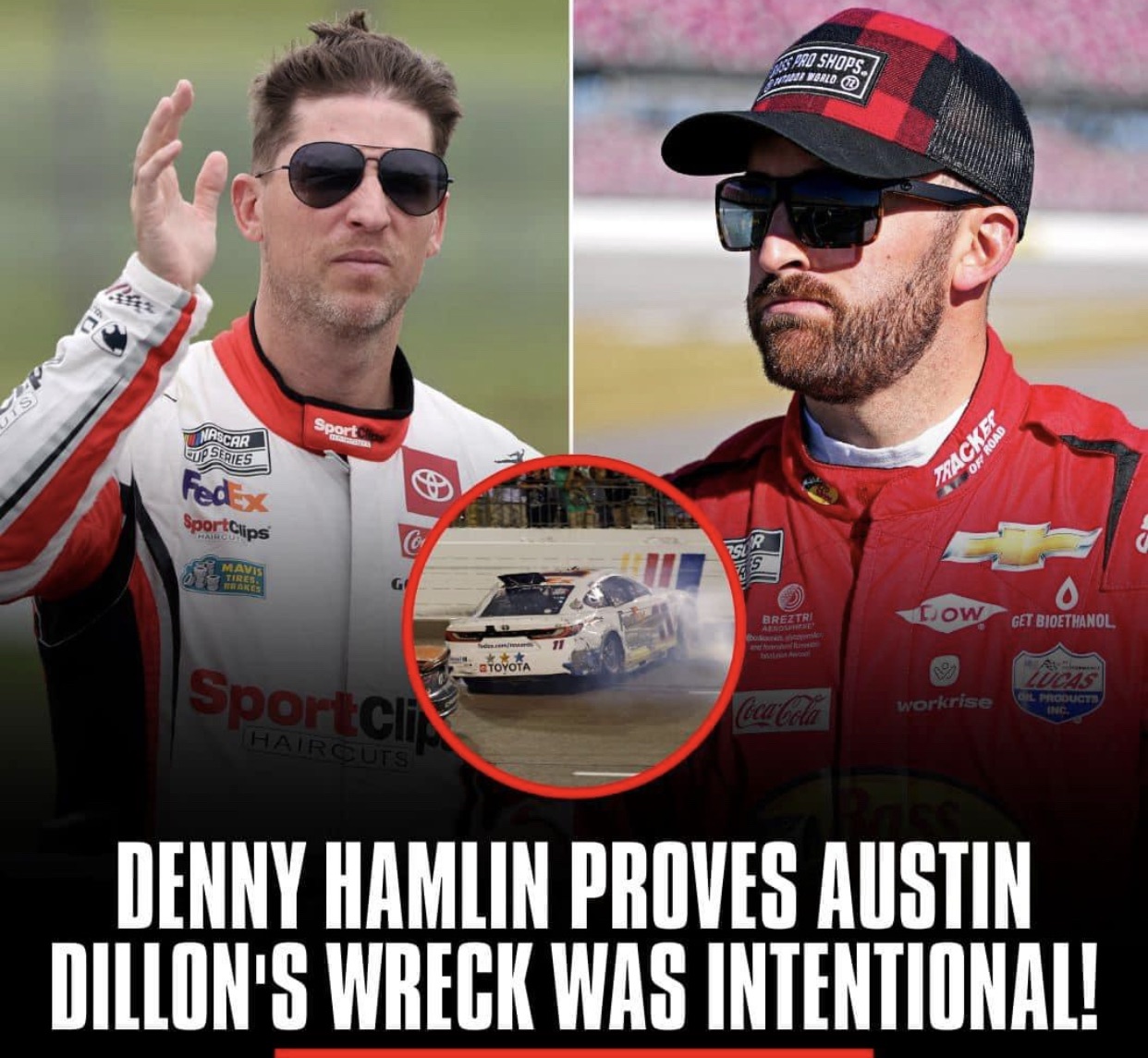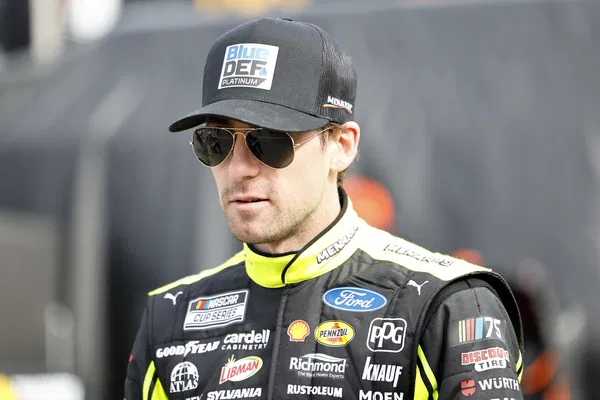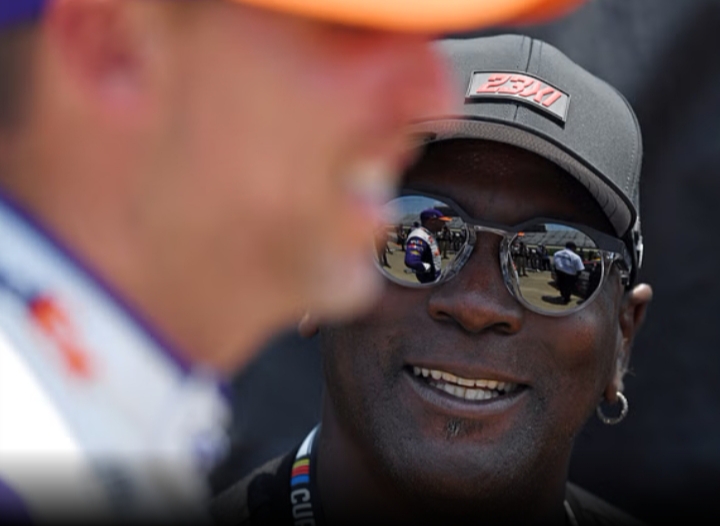The NASCAR community has been buzzing with controversy following the dramatic finish at Richmond Raceway in 2024. Central to the debate is Denny Hamlin, who has now provided compelling evidence that Austin Dillon deliberately caused the wreck that secured Dillon’s victory but left a trail of frustration and anger in its wake.
The Incident: A Race to Remember
The Cook Out 400 at Richmond was already shaping up to be one of the most intense races of the season. With high stakes on the line, particularly for Austin Dillon, who needed a win to lock in his spot in the 2024 NASCAR Playoffs, the tension was palpable as the race entered its final laps.
As the white flag waved, signaling the final lap, Joey Logano led the pack with Dillon close behind. What happened next would not only alter the outcome of the race but would also ignite a firestorm of debate. In a bold move, Dillon made contact with Logano, sending him into the wall. But it didn’t stop there—Dillon also collided with Hamlin’s No. 11 car, forcing Hamlin into the wall as well and ensuring Dillon’s path to victory.
Hamlin’s Evidence: The Proof of Intent
In the days following the race, Denny Hamlin took it upon himself to prove that Dillon’s actions were far from accidental. Hamlin, a seasoned driver with a keen understanding of racing strategy, reviewed the race footage, radio communications, and SMT data—tools that track every detail of a car’s movement during a race. His conclusion? Dillon’s move was deliberate, calculated, and meant to ensure that he emerged victorious, regardless of the consequences for others on the track.
Hamlin’s primary evidence comes from the SMT data, which shows Dillon’s car making an abrupt move toward Hamlin’s, a move that Hamlin argues could only have been intentional. Additionally, Hamlin pointed out the radio communication from Dillon’s team, where his spotter was heard yelling, “Destroy him!” moments before the contact. For Hamlin, this was the smoking gun that proved Dillon’s intent.
Hamlin didn’t just stop at the technical evidence. He also pointed to Dillon’s post-race behavior. According to Hamlin, Dillon’s celebration was telling—thanking God and holding his son while knowing the manner in which he secured the victory. For Hamlin and many others, this was a stark contrast to the sportsmanship typically expected in NASCAR.
The Fallout: What’s Next?
With Hamlin’s evidence now out in the open, the pressure is mounting on NASCAR to take action. Fans and analysts are divided, with some defending Dillon’s aggressive tactics as just part of racing, while others, like Hamlin, see it as a dangerous precedent that must be addressed.
NASCAR officials have already announced a review of the incident, and there’s widespread speculation about what penalties, if any, Dillon might face. A suspension is on the table, especially given the precedent set in past incidents where intentional wrecks led to serious consequences.
Hamlin, for his part, is not backing down. He has called on NASCAR to enforce its rules consistently and to send a message that such reckless behavior will not be tolerated. For Hamlin, this isn’t just about the Richmond race; it’s about the integrity of the sport and ensuring that all drivers compete on a level playing field.
Conclusion: A Defining Moment for NASCAR
As the dust settles from the Richmond wreck, one thing is clear: this incident will have lasting implications for NASCAR. Whether or not Austin Dillon faces penalties, the debate over what is fair game in racing will continue to rage on. For Denny Hamlin, the evidence he has presented is more than enough to prove that Dillon intentionally caused the wreck. Now, all eyes are on NASCAR to see how they will respond.
This controversy could well become a defining moment for the sport, shaping how drivers approach the balance between aggressive competition and sportsmanship in future races. As the NASCAR community awaits the final verdict, the Richmond wreck remains a hot topic, and the ramifications of what happened on that fateful final lap will be felt for a long time to come.




